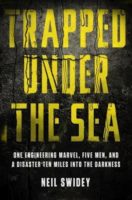The National Institute of Standards and Technology has issued the final draft report of its building and safety investigation of the World Trade Center attack for public comment. The deadline for submissions is Aug. 4. Below are comments from ENR readers on the 30 recommendations for change included in the report. We invite all ENRNR.com and ENR readers to add their comments to the ones that follow by sending them to nadine_post@mcgraw-hill.com. We will be adding comments until the end of the public comment period, Aug. 4. Comments to NIST can be sent by e-mail to wtc@nist.gov, facsimile to 301-975-6122, or regular mail to WTC Technical Information Repository, Stop 8610, 100 Bureau Drive, Gaithersburg, Md. 20899-8610. The full report is at wtc.nist.gov.
Comments to enr.com from:Jon D. Magnusson, chairman and CEO, Magnusson Klemencic Associates, Seattle; a member of the American Society of Civil EngineersFederal Emergency Management Agency WTC building performance assessment team and the National Fire Protection Associations High-rise Building Safety Advisory Committee. jmagnusson@mka.com
Richard C. Schulte, Schulte & Associates, fire protection and building code consultant, Evanston, Ill. fpeschulte@aol.com
Group 1: Increased Structural Integrity
The standards for estimating the load effects of potential hazards (e.g., progressive collapse, wind) and the design of structural systems to mitigate the effects of those hazards should be improved to enhance structural integrity.
RECOMMENDATION #1. NIST recommends that: (1) progressive collapse should be prevented in buildings through the development and nationwide adoption of consensus standards and code provisions, along with the tools and guidelines needed for their use in practice; and (2) a standard methodology should be developedsupported by analytical design tools and practical design guidanceto reliably predict the potential for complex failures in structural systems subjected to multiple hazards.
Magnusson: "NIST has provided absolutely no data showing there has been even a single death as a result of progressive collapse anywhere in this country. How do you "improve" public safety from a record of no deaths?
The consequences of the WTC attack did not constitute a case of progressive collapse. This was confirmed by experts at the 2002 NIST Progressive Collapse Workshop in Chicago. The WTC design met and bettered all currently proposed progressive collapse standards and code provisions.
Additionally, progressive collapse standards are ineffective against large scale attacks like those in Oklahoma City, at the Pentagon, and at the WTC. Shankar Nair, a prominent structural engineer in Chicago, recently published findings of a study showing that the outcome in Oklahoma City would have been the same even if the building had been designed to proposed progressive collapse standards."
Recommendation 2. NIST recommends that nationally accepted performance standards be developed for: (1) conducting wind tunnel testing of prototype structures based on sound technical methods that result in repeatable and reproducible results among testing laboratories; and (2) estimating wind loads and their effects on tall buildings for use in design, based on wind tunnel testing data and directional wind speed data.
Magnusson: "Wind tunnel results had absolutely no bearing on the outcome of the WTC attack. The safety record of buildings designed by wind tunnel testing is 100%...


Post a comment to this article
Report Abusive Comment